Info
Subfamily: Panicoideae
Genus etymology: Setaria = "bearing bristles" [Latin] refering to the bristles of the inflorescence
Species etymology: adhaerens = "cling" [Latin] refering to the barbed hairs of the inflorescence with readily cling
Photosynthetic type: C4 (warm season)
Nativity: naturalized - accidental
First recorded in Hawaiʻi: 1871
Map
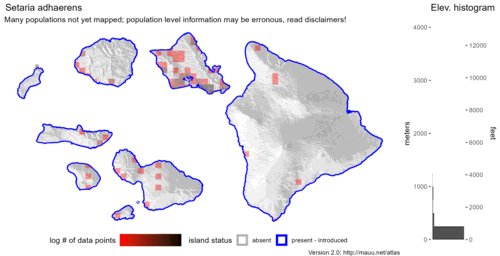

Inflorescence
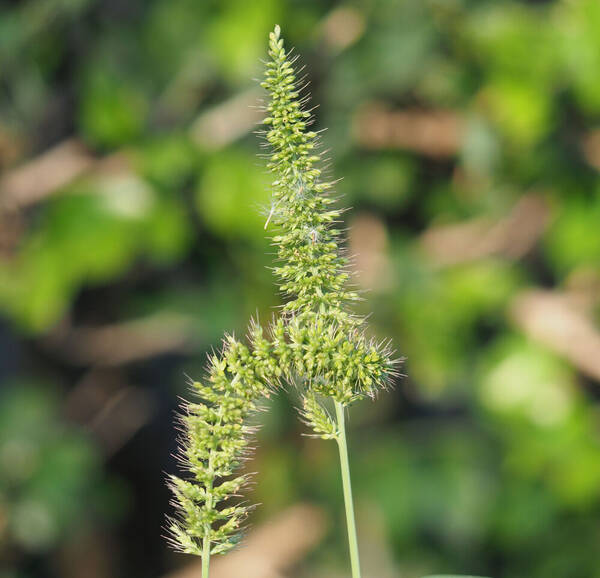
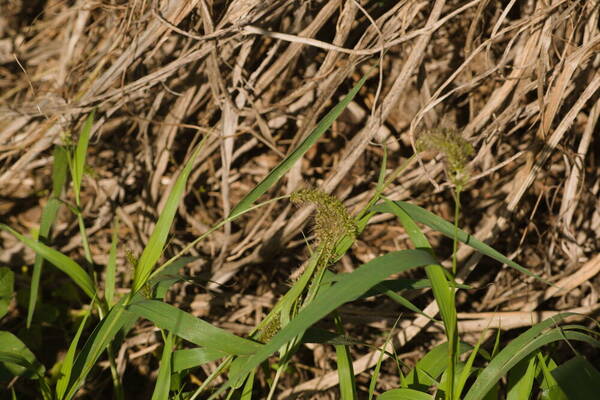
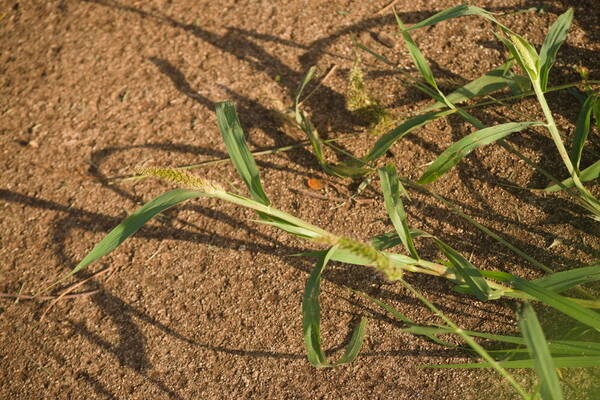
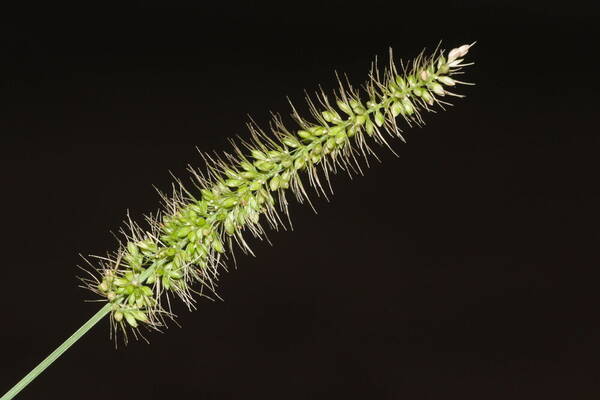
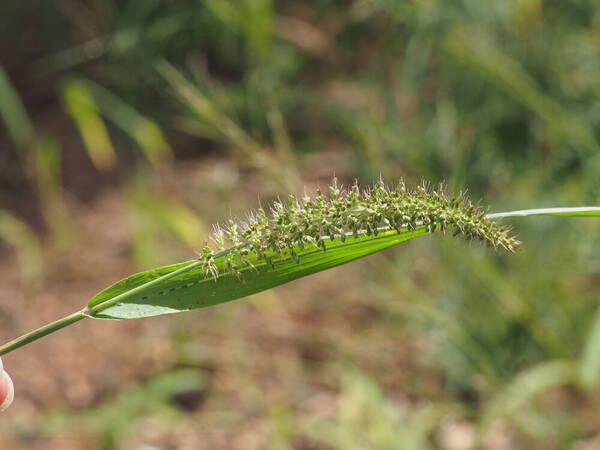

Plant
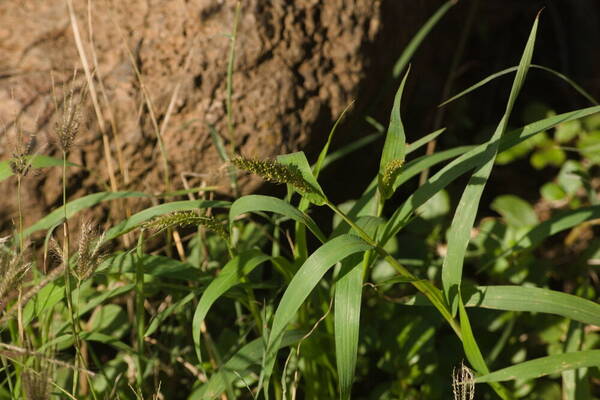
Habit
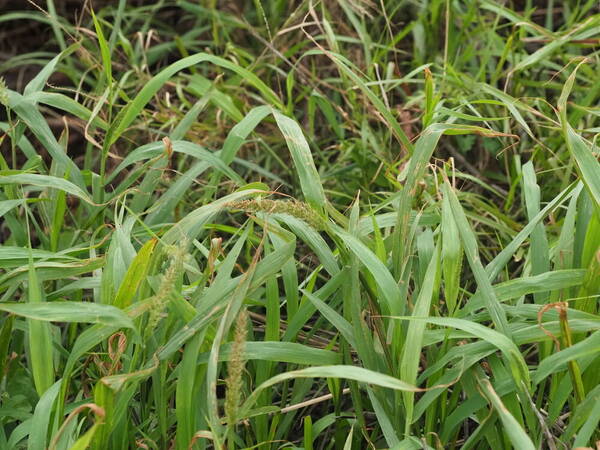
Spikelets
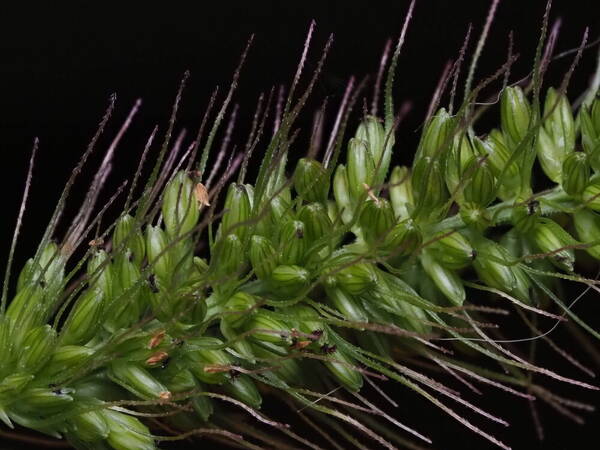

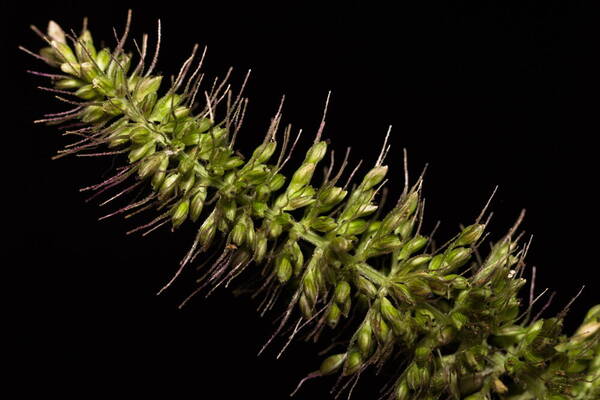
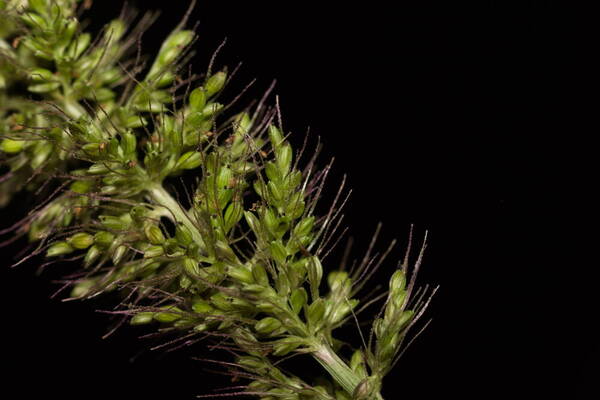
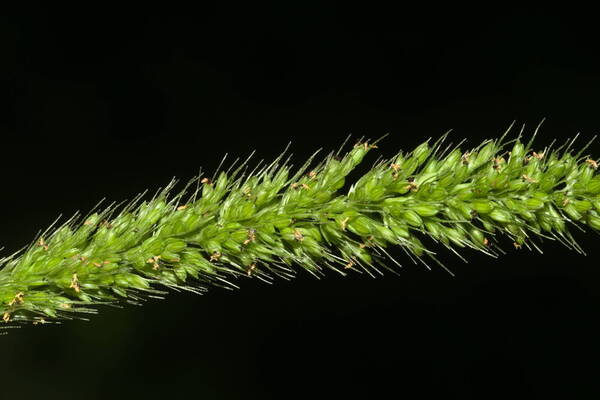
Description
Plants annual. Culms 30-100 cm; nodes glabrous. Sheaths glabrous, margins ciliate distally; ligules to 1 mm, densely ciliate; blades 5-15 mm wide, flat, abaxial surfaces scabrous. Panicles 5-15 cm, tapering to the apices; rachises retrorsely rough hispid; bristles solitary, 4-7 mm, retrorsely scabrous. Spikelets 2-2.3 mm. Lower glumes about 1/3 as long as the spikelets, obtuse, 1(3)-veined; upper glumes nearly as long as the spikelets; lower paleas about 1/2 as long as the spikelets, broad; upper lemmas finely and transversely rugose; upper paleas similar to the upper lemmas. 2n = 18, 36, 54, 72, 108.
(Description source: Barkworth, M.E., Capels, K.M., Long, S. & Piep, M.B. (eds.) 2003. Flora of North America, north of Mexico. Volume 25. Magnoliophyta: Commelinidae (in part): Poaceae, Part 2. Oxford University Press, New York. 783 pp http://floranorthamerica.org/Setaria_verticillata )
Tufted annuals; culms (2-)3-10 dm tall, often geniculate and branching at lower nodes, glabrous except above near the panicles. Sheaths compressed-keeled, glabrous, the upper margins ciliate; ligule ciliate, 0.7- 2mm long; blades flat, 5-10(-13) mm wide, glabrous to scaberulous, sometimes sparsely pilose, margins scabrous. Panicles yellowish green to purple-tinged, densely flowered, cylindrical, (2-)4-10(-12) cm long, axis densely retrorsely hispidulous, primary branches short, verticillate, spikelets several to numerous per branch, subtended by 1(-2) bristle(s), the bristles 2-4.5(-6) mm long, retrorsely scabrous; glumes unequal, first glume broadly ovate, 0.5-0.7(-1.2) mm long, ca. 1/3 as long as the spikelet, 1(-3)-nerved, apex obtuse, sometimes mucronate, second glume ovate, 1.6-2 mm long, slightly shorter than first lemma, 5-7- nerved, apex rounded; first lemma 1.5-2.4 mm long, 7-nerved, apex rounded; first palea small, membranous; second lemma ovate, 1.8-2.3 mm long, weakly 3-nerved, finely transverse-rugose; second palea similar in texture to second lemma. Caryopsis pale brown, broadly ovoid, slightly dorsiventrally compressed, 1.2-1.5 mm long. (2n = 18, 20, 36, 54.]
(Description source: O’Connor, P.J. 1990. Poaceae, pp. 1481–1604. In: Wagner W.L., Herbst D.R. & Sohmer S.H. (eds.)., Manual of the flowering plant of Hawaiʻi. Vol. 2. University of Hawaii Press & Bishop Museum Press, Honolulu )